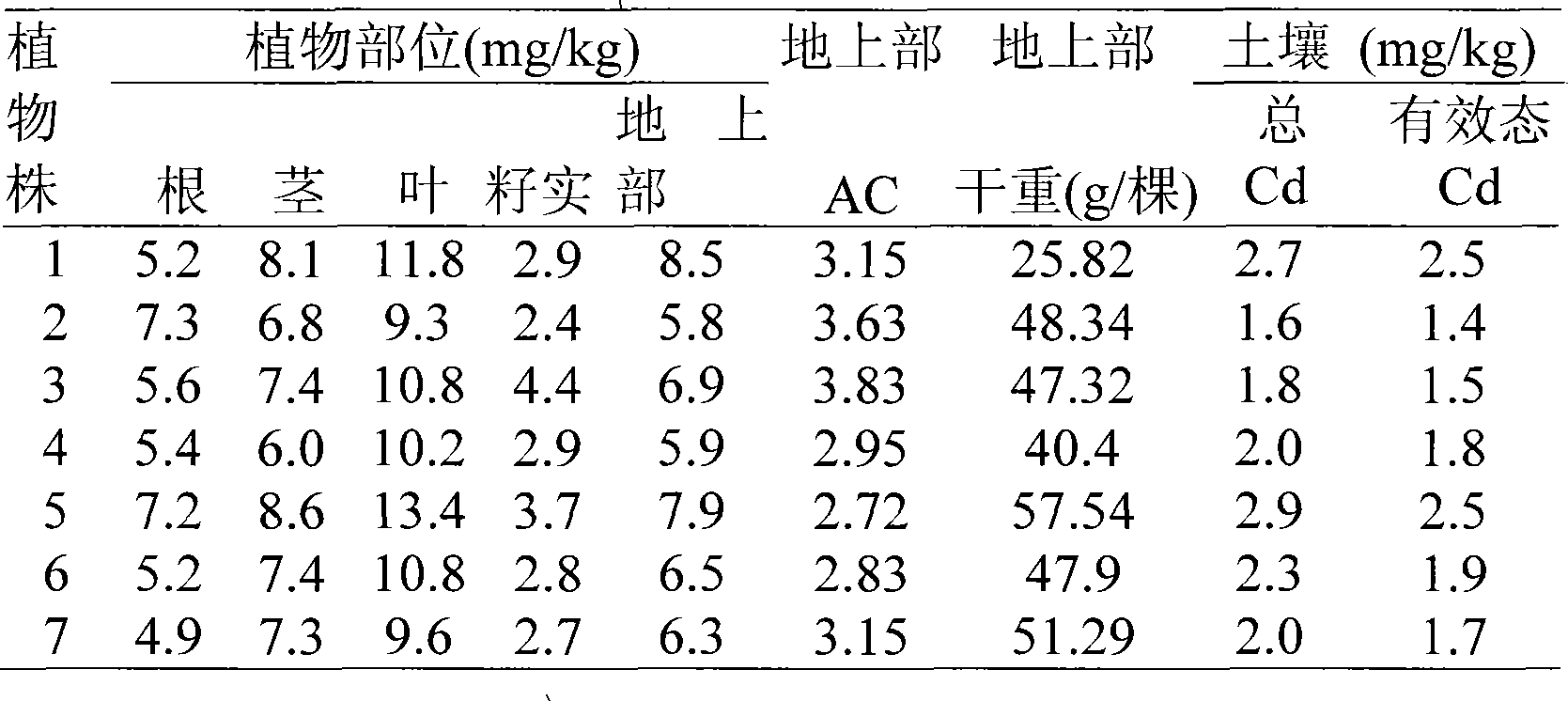Method for repairing heavy metal pollution soil using abundant plants butter weed
A technology of small liquor grass and polluted soil, which is applied in the field of phytoremediation of heavy metal-contaminated soil, can solve the problem that the heavy metal content in the aboveground part of the plant exceeds a certain critical content, and achieve no secondary pollution, good water erosion, and low cost Effect
- Summary
- Abstract
- Description
- Claims
- Application Information
AI Technical Summary
Problems solved by technology
Method used
Image
Examples
Embodiment 1
[0029] Example 1 Potted plant concentration gradient test
[0030] The test site is located in the Shenyang Ecological Experimental Station of the Chinese Academy of Sciences. The geographical location is 123°41' east longitude, 41°31' north latitude, and an altitude of about 50m. There is no pollution source around the test station, and it is a heavy metal unpolluted area. The station is located in the central area of the southern Songliao Plain, about 35km away from Shenyang City. It has a temperate semi-humid continental climate, with an average annual temperature of 5-9℃, and an annual active accumulated temperature greater than 10℃ of 3100-3400℃, with total annual radiation. 520~544KJ / cm 2 , Frost-free period is 127~164d, annual precipitation is 650~700mm. The pot experiment was collected from the top soil (0-20cm) of the station, and the soil type was meadow brown soil.
[0031]There are 6 treatments in the experiment, which are control (CK, no Cd) and 5 different Cd conce...
Embodiment 2
[0045] Example 2 Concentration characteristics of heavy metals by Diwort in mining contaminated area
[0046] The Qingchengzi lead-zinc mine in Fengcheng, Liaoning, is located at 123°37' east longitude and 40°41' north latitude. The annual average temperature of the mining area is 6.5~8.7℃, and the precipitation is 674.4mm. The main parent rocks in the mining area are marble and mica schist, and the soil is brown loam soil. The vegetation cover is mainly secondary forests and sparse shrubs and some artificial metasequoia and black locust forests. The elevation of each pit mouth of the ore body is about 270-405m, and the mining location is about 180-390m away from the ground. The grade of lead-zinc ore is about 70-80%. Cd is mainly associated with sphalerite crystal lattice, with an average grade of about 0.034%, but it is not formed separately. mine. The sampling of plants is the sampling method of seeing one plant and picking one plant.
[0047] The white winegrass plants collect...
Embodiment 3
[0051] Example 3. Cd enrichment characteristics of Dioschia diffusa in sewage irrigation area
[0052] Shenyang Zhangshi Sewage Irrigation District is located in the western suburbs of Shenyang, about 30km away from the Shenyang Ecological Station of the Chinese Academy of Sciences. Since 1962, due to the unreasonable use of Cd-containing industrial sewage from Shenyang Weigong Open Channel to irrigate rice fields, most of the farmland in the irrigation area has been contaminated. According to a survey in 1975, the soil is mainly contaminated by Cd and Cd is mainly distributed on the surface of the soil (about 0~35cm) , The area of land contaminated by Cd is about 2800hm 2 , The Cd concentration of soil in more polluted areas is 5-7mg / kg. Random sampling was used to collect plants and soil samples from their roots in the Zhangshi Irrigation District of Shenyang when the wine grass was mature.
PUM
 Login to View More
Login to View More Abstract
Description
Claims
Application Information
 Login to View More
Login to View More - R&D
- Intellectual Property
- Life Sciences
- Materials
- Tech Scout
- Unparalleled Data Quality
- Higher Quality Content
- 60% Fewer Hallucinations
Browse by: Latest US Patents, China's latest patents, Technical Efficacy Thesaurus, Application Domain, Technology Topic, Popular Technical Reports.
© 2025 PatSnap. All rights reserved.Legal|Privacy policy|Modern Slavery Act Transparency Statement|Sitemap|About US| Contact US: help@patsnap.com



